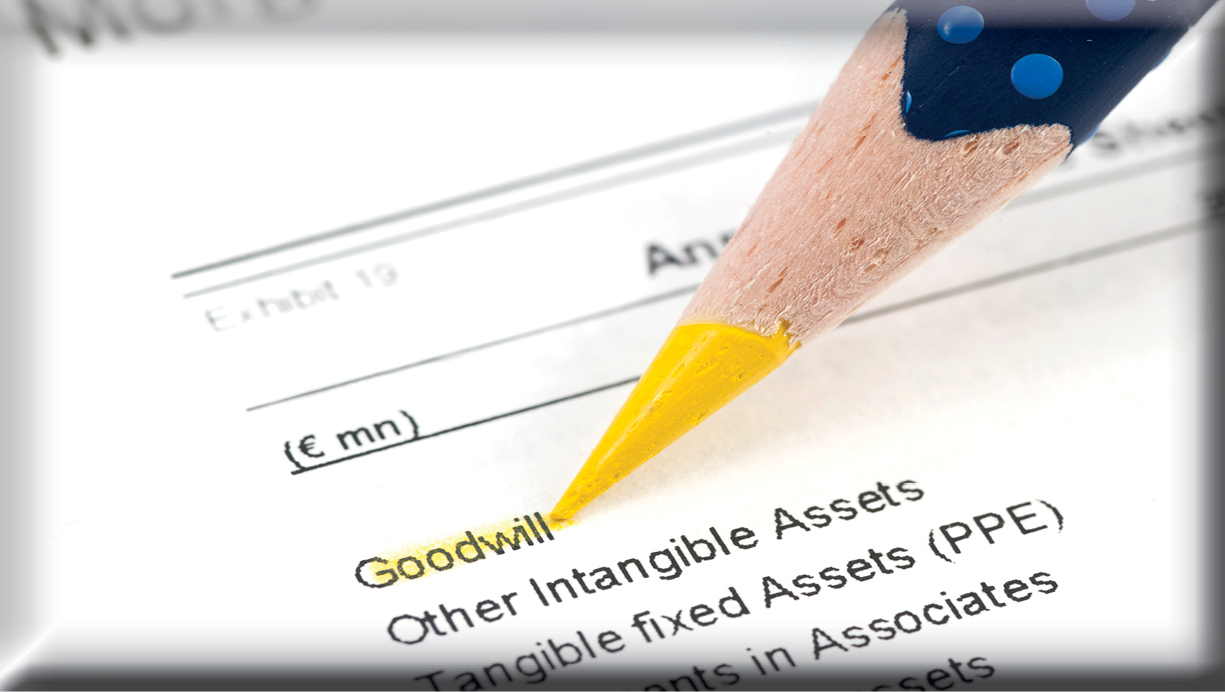
With businesses currently struggling, expected revenue and profit levels are declining for many. If you carry goodwill on your balance sheet, this global economic decline may be a triggering event for testing goodwill for impairment, and this may be the time to do so. With high volatility in the stock market and an end date for COVID-19 Stay-at-Home just entering the discussion, experts cannot predict what the long-term economic implications will be on the value of your real estate, business, and other assets. We want our clients to know they have options.
Goodwill is the excess amount an acquirer paid for a reporting unit over the Fair Value of individually identified and separately recognized tangible and intangible assets. According to Accounting Standards Codification (ASC) 350-20, goodwill and indefinite-lived intangible assets should be tested for impairment at least annually, or upon the occurrence of a triggering event. Triggering events could include unexpected business disruptions such as losing a major customer, fire, environmental restrictions, major economic down turns, etc.
Step 0, Step 1, Step 2
As outlined in ASU 2014-02, private companies reporting under US GAAP that do not amortize goodwill can choose to assess if impairment exists simply by examining qualitative factors relating to the business (Step 0). Typically, a company’s controller or CFO could conduct this qualitative test. If the result of that test points to the need to continue to the impairment process (Step 1), guidance can be found with the company’s accountants, or valuation experts. If a reporting unit’s financial performance has measurably declined due to these qualitative factors, it must proceed to the two-step quantitative assessment.
The company must first compare the Fair Value (FV) of the reporting unit to its carrying amount (Step 1). If the carrying amount is higher than its FV, the company must calculate an impairment charge. This is done by comparing the implied FV of goodwill to its carrying amount (Step 2). The current guidance requires companies to calculate impairment by calculating the net FV of ALL assets (including any unrecognized intangible assets and liabilities) of the reporting unit and subtracting it from the FV of the reporting unit previously calculated in Step 1. The difference between the current carrying value of Goodwill and the revised FV of Goodwill, based on the Step 2 shown above, is the impairment charge.
This two-step process is often costly and difficult. In 2014, Financial Accounting Standards Board (FASB) decided to reduce the process to just one step for private companies reporting under GAAP (Private Company Alternative). The amount of impairment is calculated directly by subtracting the revised FV of the reporting unit from the carrying value of the reporting unit. If the FV is higher, there is no impairment. However, should that reporting unit become part of a public company, it may have been necessary to re-calculate goodwill impairment by the original two-step method.
ASU 2017-04
Under ASU 2017-04, both private and public companies will perform its annual (or interim) goodwill impairment test by comparing the FV of the reporting unit to its carrying value, if the company believes the reporting unit’s goodwill is more likely than not reduced. This test can be performed at any time during the fiscal year, but unless there is a triggering event, it should be carried out on the same date each year. The impairment charge is determined by the amount by which the revised FV of the reporting unit is less than its carrying amount. Step 2 will be eliminated.
For example:
XYZ Corporation, publicly traded, makes as acquisition in May of 2018. They purchase ABC Corporation for $100,000,000. XYZ decides they would like to use December 31 as their goodwill impairment testing date going forward and test it as of December 31, 2018. They conduct a qualitative test and believe that no impairment exists (Step 0). The following year XYZ conducts the qualitative test as of December 31, 2019. If the test again indicates no impairment (Step 0) they are done. If this test indicates possible impairment, the company is required to move on to Step 1. If Step 1 results in the FMV of the Goodwill being greater that the carrying amount, there is no impairment and they are done. If the test results in the FMV being less than the carrying amount, there is impairment, and goodwill must be written down by the impairment amount. In June of 2021, with ASU 2017-04 in effect, there is a triggering event and the company conducts the impairment test. This time XYZ goes directly to conducting Step 1, which results in the FMV of the goodwill being less than the carrying amount and therefore there is an impairment and subsequent write down.
05/31/2018
Acquisition ($100,000,000)
Conduct Purchase Price Allocation
Establish Goodwill (GW) Amount ($50,000,000)
12/31/2018
Conduct Goodwill Impairment Test
Step 0 – shows no impairment or possible impairment
Step 1 – if Step 0 shows possible impairment
No Impairment
12/31/2019
Step 0 – shows no impairment or possible impairment
Step 1 – if Step 0 shows possible impairment
FV of GW ($55,000,000) exceeds BV of GW
No Impairment
01/01/2020
ASU 2017-04 Effective for XYZ
06/30/2021
Conduct a Goodwill Impairment Test (Triggering Event)
Step 1- FV of GW ($40,000,000) is less than BV of GW
Impairment – Write down
All public companies must comply with the revisions of ASU 2017-04, in accordance with the tiered effective dates for its implementation:
- For public business entities that are SEC filers, fiscal years beginning after December 15, 2019;
- For public business entities that are not SEC filers, fiscal years beginning after December 15, 2020; and
- For all other entities, including not-for-profits, fiscal years beginning after December 15, 2021.
Early adoption is permitted for interim or annual goodwill impairment tests performed on testing dates after January 1, 2017.
These are challenging times. Sobel EAC Valuations wants its clients to know we are here to answer questions and alleviate your concerns.


